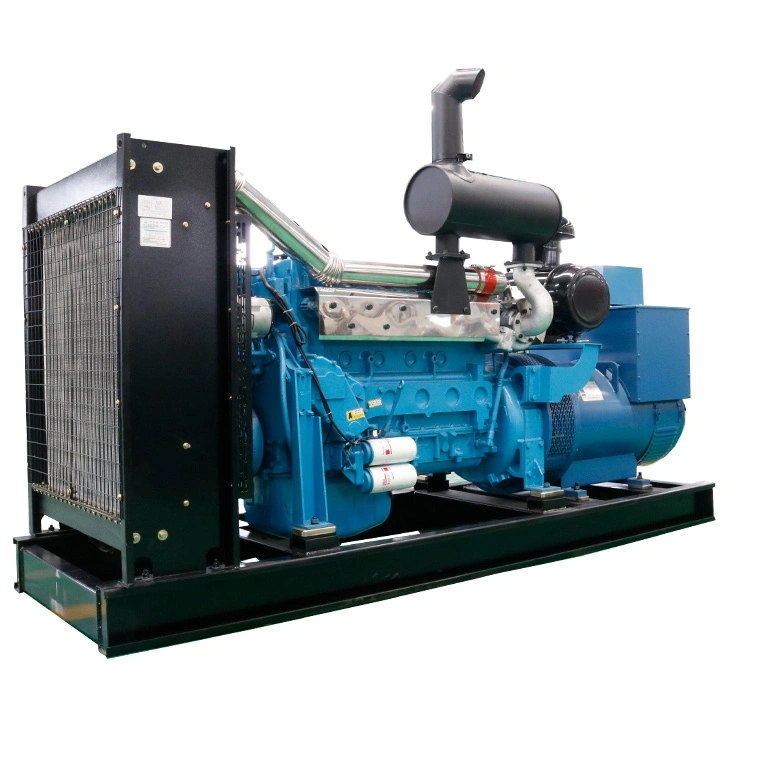Introduction
Vibration testing is a crucial process in various industries, including automotive, aerospace, and electronics, to ensure the durability and reliability of products under different operating conditions. One of the key components in vibration testing setups is the power source, which often relies on diesel generators to provide the necessary energy to drive the vibration equipment. In this article, we will explore the role of diesel generators in vibration testing, their advantages, challenges, and best practices for optimal performance.
Overview of Vibration Testing
Vibration testing is a method used to evaluate the performance and structural integrity of products by subjecting them to controlled vibrations that simulate real-world conditions. By analyzing the response of the product to these vibrations, engineers can identify potential weaknesses, design flaws, or durability issues that need to be addressed before the product is released to the market. Vibration testing is used in a wide range of industries, including automotive, aerospace, defense, electronics, and industrial manufacturing.
The testing process involves mounting the product or component on a vibration shaker or table and subjecting it to varying frequencies, amplitudes, and accelerations. The vibrations can be applied in different directions (e.g., vertical, horizontal, or rotational) to simulate the actual operating conditions of the product. The data collected during vibration testing is used to assess the product's performance, structural integrity, and reliability, as well as to validate design assumptions and calculations.
Role of Diesel Generators in Vibration Testing

Diesel generators play a critical role in providing the necessary power for vibration testing equipment, including electrodynamic shakers, hydraulic shakers, and other vibration systems. These generators are preferred for their robustness, reliability, and ability to deliver high power output required for driving the vibration equipment. Unlike grid power sources, diesel generators offer the flexibility to conduct vibration testing in remote locations or facilities without access to a stable power supply.
Key Advantages of Diesel Generators for Vibration Testing
1. Portability and Mobility: Diesel generators are highly portable and can be easily transported to different testing sites or facilities. This mobility is particularly beneficial for on-site testing or field testing scenarios where access to grid power may be limited or unavailable.
2. High Power Output: Diesel generators are capable of delivering high power output, making them ideal for driving heavy-duty vibration testing equipment that requires substantial energy consumption. This ensures that the vibration testing process can be conducted efficiently and effectively.
3. Reliability and Durability: Diesel generators are known for their robustness and reliability, making them well-suited for demanding vibration testing applications. They can operate continuously for extended periods without experiencing performance degradation, ensuring uninterrupted testing procedures.
4. Independence from Grid Power: Diesel generators operate independently of the grid power supply, providing a reliable source of energy for vibration testing in remote locations, outdoor environments, or facilities with unreliable power infrastructure. This independence ensures that testing can proceed without interruptions due to power outages or fluctuations.
Challenges and Considerations
While diesel generators offer several advantages for vibration testing applications, they also present some challenges and considerations that need to be addressed for optimal performance and efficiency:
1. Noise and Vibration: Diesel generators can produce noise and vibrations during operation, which may interfere with the vibration testing process. Proper isolation measures, soundproofing enclosures, and vibration damping techniques should be implemented to minimize the impact of generator noise and vibrations on the testing environment.
2. Emissions and Environmental Impact: Diesel generators emit exhaust gases and particulate matter during operation, which can pose environmental concerns and health risks. It is important to comply with regulatory requirements regarding emissions control, exhaust treatment, and environmental management to mitigate the impact of diesel generator emissions on the surroundings.
3. Maintenance and Serviceability: Diesel generators require regular maintenance, servicing, and monitoring to ensure optimal performance and reliability. Routine inspections, oil changes, filter replacements, and component checks are essential to prevent breakdowns, downtime, and costly repairs during vibration testing operations.
bojinsi for Using Diesel Generators in Vibration Testing
To maximize the benefits of diesel generators in vibration testing applications and overcome potential challenges, the following best practices should be followed:
1. Proper Sizing and Selection: Choose a diesel generator with the appropriate power rating and capacity to meet the energy requirements of the vibration testing equipment. Consider factors such as peak power demand, duty cycle, and load variations to ensure that the generator can deliver consistent and reliable power output.
2. Site Planning and Installation: Place the diesel generator in a well-ventilated, accessible location that is away from testing equipment to minimize noise and vibration interference. Install soundproofing enclosures, vibration isolation mounts, and exhaust ventilation systems to create a conducive testing environment.
3. Regular Maintenance and Monitoring: Establish a preventive maintenance schedule for the diesel generator, including routine inspections, fluid checks, filter replacements, and component testing. Monitor key performance indicators such as fuel consumption, load balance, temperature, and emissions to detect any potential issues early and prevent downtime.
4. Emissions Control and Compliance: Ensure that the diesel generator complies with local regulations and environmental standards for emissions control, exhaust treatment, and noise pollution. Implement measures such as exhaust scrubbers, catalytic converters, and noise barriers to minimize the environmental impact of generator operation.
Conclusion
Diesel generators play a vital role in powering vibration testing equipment across various industries, providing the necessary energy to conduct rigorous and reliable tests on products and components. Despite their advantages in terms of portability, power output, and reliability, diesel generators also present challenges related to noise, emissions, and maintenance that need to be addressed for optimal performance. By following best practices for sizing, installation, maintenance, and emissions control, engineers and testing professionals can leverage the benefits of diesel generators for vibration testing while ensuring compliance with regulatory requirements and environmental standards.
